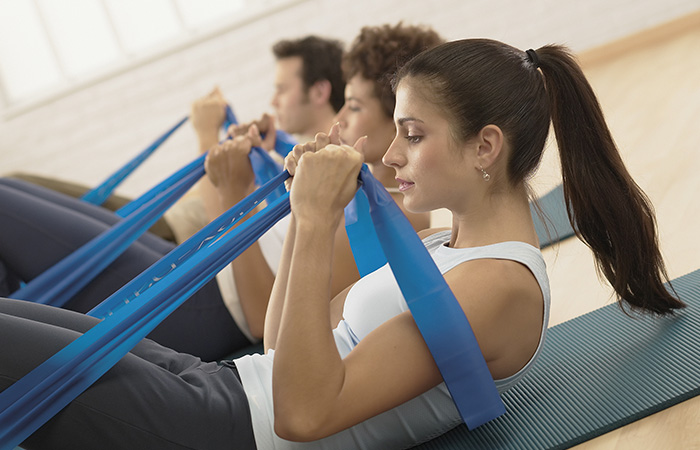
Learning is a constant process of review. Going over basic principles on occasion is a great way of refreshing and strengthening the place of this information in your memory. Review can also lead to new insights and inspire creativity.
With this in mind, let’s briefly review the Five Basic Principles of STOTT PILATES®. Click on the links for more review and images demonstrating these principles.
Starting Positions
It’s important to start any exercise in a tension-free position. If there is tension before starting, too much stress will be created once the movement begins.
Breathing
The STOTT PILATES breath pattern expands the ribcage out to the sides, without allowing the shoulders to lift. It is also important to breathe into the lower part of your lungs, as there is more efficient gas exchange.
Pelvic Placement
STOTT PILATES emphasises stabilization of the pelvis and lumbar spine in either a neutral or imprinted position. Neutral Placement maintains the normal curve of the lower back, while in the Imprinted Position the lower back is moving toward the mat.
Ribcage Position
The ribcage position affects the alignment of the thoracic (upper) spine. When lying on your back in a neutral position, maintain the sense of the weight of the ribs gently resting on the mat (maintain the normal curve of the upper back). Don’t lift your ribcage off of the mat, or push your ribcage into the mat. Pay particular attention to the placement of your ribcage when inhaling or while performing arm movements.
Shoulder Stability
Stabilizing your scapulae (shoulder blades) on the back of the ribcage is as important as contracting your abs during the initiation of every exercise. This will help you avoid strain through your neck and upper shoulders. To achieve proper placement, a sense of width should be maintained across the front and back of the shoulders. Make sure you neither allow your shoulders to round forward too much, nor squeeze together toward the spine. Shoulders should not be lifted too far, or over-depressed. Placement should be somewhere between these two positions.
Head & Neck Placement
Your cervical spine should hold its natural curve with your head balanced directly above your shoulders when sitting, lying and standing. In some cases, a small pillow should be used when lying on your back to put your head and neck in a comfortable position. Whenever you lift your head and upper body from the mat, lengthen the back of your neck and nod your head forward without jamming the chin into the chest. There should be enough room to fit your fist between your chin and chest. Once your head is in proper position and your shoulder blades are stabilized, the upper torso can be lifted by contracting the abs and sliding your ribcage toward your pelvis.
From rote memorization to mnemonic devices, everyone has different ways to study and tricks to retain information. Share your tips with the community—we can all learn from each other.

Recent Comments